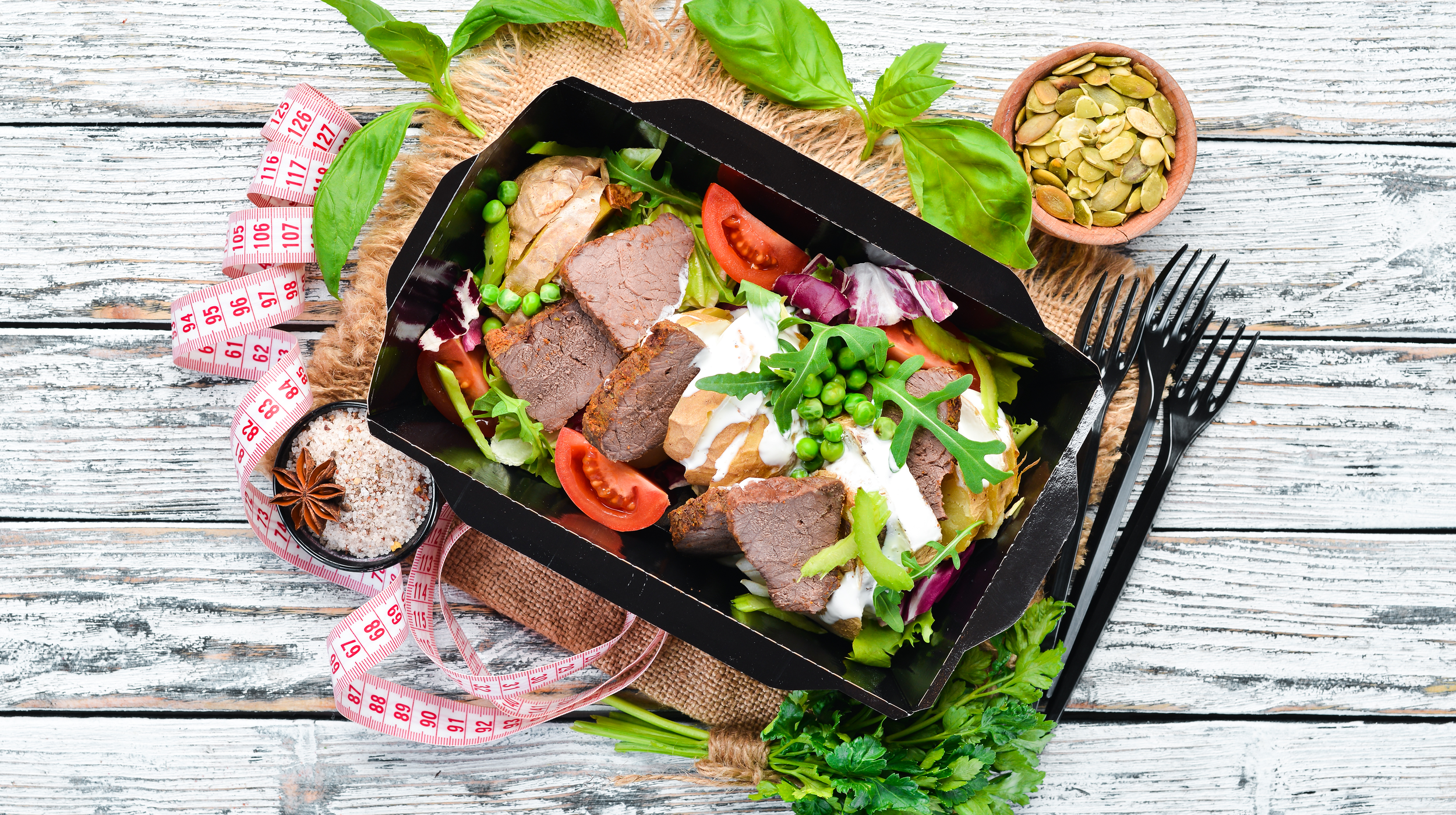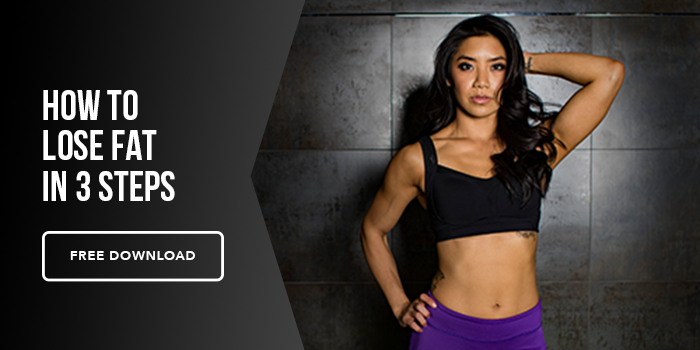Regardless of your fitness or health goals, nutrition plays a fundamental role. What you eat literally becomes a part of you. Every time you consume something, a complex array of reactions and actions, known as your metabolism, breaks food down into its components and directs nutrients where they are needed while moving waste out of the body. What you eat can have profound effects on your entire body, including your brain. Studies show that diet can either build muscle and strengthen bone or weaken both. What you consume can sharpen your mind or cause foggy headed symptoms. Research has been able to prove how food can nourish or slowly poison your organs. What you eat even plays a role in your psyche. Food can make us feel happy, distracted, satisfied, emotional or even irritable depending on how our bodies react to the food consumed and the psychological connections we have made with the food. To say your nutrition is an important factor for health and fitness is an understatement. It’s one of THE MOST important factors.
Nutrition can also seem complex and confusing. There are thousands of diet and nutrition books available today that all promise to make us healthier, leaner and stronger. Some promote eating lower carbohydrates while others promote low fat. There are vegan books and carnivore books. Some tell you to eat many small meals daily, while others tell you to eat infrequently. Diet was the hardest part of training clients during my two decades of professional fitness training. This article is meant to help clear up a lot of the confusion for you.
It is true that food has innumerable compounds, each influencing the diet. There is a wide individual variance when it comes to how our bodies ultimately react and respond to our diets. Finally, it is even true that a diet that may work great for you now may not work for you under different life or physical circumstances in the future. However, we don’t need to dive into the small details to get started with a generally healthy diet. In fact, it is usually COUNTER PRODUCTIVE to try to get that complicated. Simple is better, especially when you are first starting on a fitness and health journey.
The most common reason why people have poor health due to diet can be boiled down to two main factors. They eat too many calories and they do not eat optimal levels of the three macro nutrients.
Let’s start with calories. Eating too many calories will result in fat gain REGARDLESS of where those calories come from. You can eat the “healthiest” whole foods, but you will gain body fat if you eat too much. On the flip side, if you are eating an appropriate number of calories you can get away with a lot. For example, a high sugar diet can be damaging when it is within a high calorie diet. If the diet is low in calories, a high percentage of sugar causes far less problems.
Calories are units of energy. What they do is tell you how much energy is contained within food. Your body uses energy to function and to be alive. If you eat MORE energy than you burn, that extra energy does not just disappear, it needs to go somewhere. Your body then stores these calories in the form of body fat. When this happens for too long and you gain too much body fat your health suffers, and it does not matter how “healthy” your diet is. Too much fat gain and fat storage causes negative health effects. No matter what diet you follow, do not overeat.
Aside from calories, you should also be aware of what makes up those calories. Calories are made up of macronutrients. They are proteins, fats and carbohydrates. Proteins and carbohydrates contain 4 calories per gram and fats contain 9 calories per gram. Proteins and fats are essential meaning you MUST consume them, or your health will suffer. Carbohydrates are not essential, meaning you can avoid them for the rest of your life, but it is usually not desirable to do so. Most people feel and perform better when their diets contain carbohydrates.
One of the easiest and most objective ways to start eating in a way to get to your fitness and health goals is to track and manage your calories and macronutrient intake. Since all food contains macronutrients (except calorie free foods) and calories, you can simply aim for your desired number of proteins, fats and carbs and you will have tackled the largest component of healthy eating. Eating the appropriate levels of calories, proteins, fats and carbs, will help you to achieve a good degree of your goals. That is not to say macros and calories are all that matter, but this is a very effective and big first step towards getting where you want to go.
You may be wondering how to use macros to reach your goals. Keep reading. Below I will show you 5 ways to use macros to accomplish to your fitness and health goals.
1. Eat high proteinRegardless of whether your goal is muscle building, strength building, athletic performance or fat loss, studies consistently show that a relatively high protein diet is beneficial. When it comes to muscle and strength gain, studies show that high protein diets build muscle faster and contribute to more strength gains. For athletic performance, studies show that high protein diets help with faster recovery from intense athletic training sessions versus lower protein diets. For fat loss, studies show that high protein diets maintain more muscle (which helps prevent metabolism slow down) and they suppress appetite better than lower protein diets.
Although there is always an individual variance with diet and some of you may digest protein better than others, most of you will do better if protein intake was high. What is high? For non-obese individuals, aim for 0.6 to 1 gram of protein per pound of body weight. For example, if you are a 150lbs person this would measure to consuming 90 to 150 grams of protein per day. If you are obese, use your lean body mass. Good sources of protein include all animal meats, fish, eggs and dairy. Vegan sources of protein aren’t as concentrated, but nuts, seeds, soy and legumes are high in protein compared to most vegan foods.
2. Manipulate CarbsEarlier I stated that carbohydrates were not essential. You can eat a diet that contains zero carbohydrates (ketogenic and carnivore diets do this) and you would likely be totally fine. I am NOT advocating a super low carb diet, as I have found that most of my clients did best when they incorporated some carbs in their diets. However, since carbs are not essential they are the easiest macronutrient to manipulate and test. Why would you want to do this? To see how you FEEL and PERFORM. Some people do well on lower carb diets while others do best on higher carb diets.
Typically, the more intense workouts or endurance training you do, the better you will perform and feel with a diet that is higher in carbs. Carbohydrates are turned into energy very quickly by the body making them a good source of fuel. If you are usually sedentary, then you may do better on a lower carbohydrate diet. You may not need lots of fast energy so cutting carbs down could be an easy way to cut calories.
Cutting carbs can also help people with their appetite. Heavily processed packaged foods are engineered to make us eat more. The scientists that create chips, cookies, cereals, and other heavily processed foods, do a great job of making these foods effective at encouraging us to eat more. These foods are also usually high in carbohydrates, so when we cut carbs we typically inadvertently cut out heavily processed foods. This is the likely reason why people report an easier time eating less calories when their carbs are low. Stay within your calorie targets but try some lower carb and higher carb weeks to see which works best for you.
3. Eat Proteins and Carbs Before and After Hard Training SessionsIf you are a fitness fanatic and you like to train hard and long, you will benefit from having a meal that is high in proteins and carbs a few hours before your session. The carbs will be converted and stored as energy to be used during the workout, and the proteins will help minimize the muscle damage and stress that can be caused by intense workouts.
After your workout you can speed up recovery by eating another high protein and high carb meal. This is especially important if you plan on training hard again later that day. After a hard training session, your energy has been depleted and this is replenished when carbs are consumed. The proteins aid in muscle recovery and may even help with the muscle building process.
4. Spread Protein Containing Meals OutAlthough this tip can be regarded as “splitting hairs,” it can make a difference for people who push their bodies to the limits with their training. There is a louder muscle building signal that is sent from (4) evenly spaced high protein meals versus (2) high protein containing meals, even when total protein amount is controlled for. This isn’t the main reason why I typically recommend people space protein out throughout the day. Protein is the most satiating of the macronutrients. This means it controls appetite the best and is the least likely to promote overeating. By spacing protein throughout the day, I have found that my clients have an easier time eating an appropriate number of calories.
5. See How You FeelAs you track your calories and macros, pay close attention to how eating different amounts of each makes you feel. Also pay attention to how different foods that contain similar macro contents affect you. You may find that carbs from white rice make you feel and perform your best, or that carbs from fruit gives you gas or causes bloating. For some people, proteins from dairy are intolerable (I am one of these people), but for others dairy proteins feel amazing. Fats from animal products might cause you to feel lethargic, while fats from vegetables make you feel healthy and vibrant. This is all very important because feeling good and performing your best will make eating the right number of calories easier. Plus, at the end of the day, feeling good and performing our best is the ultimate goal.






